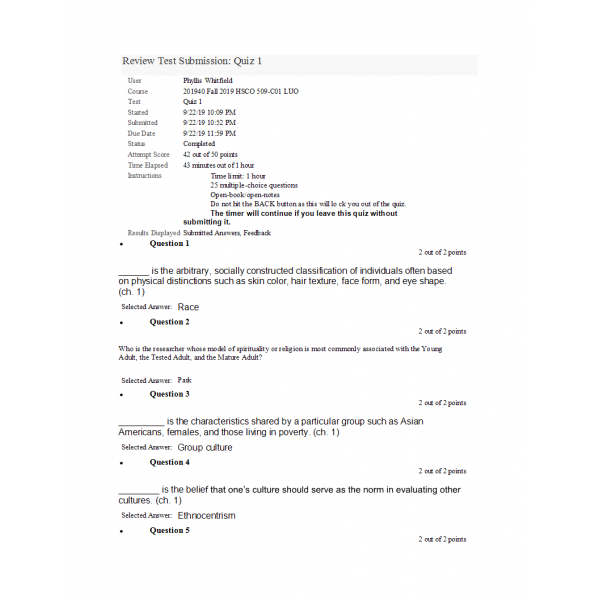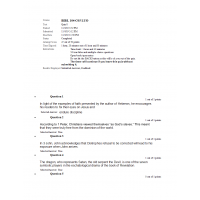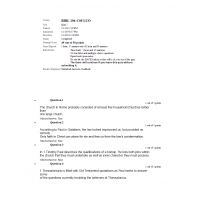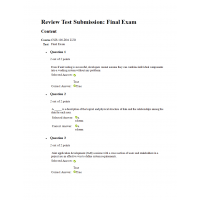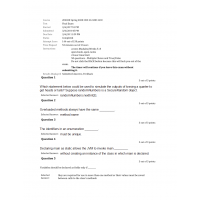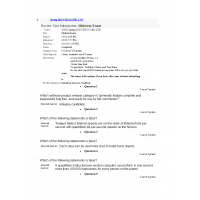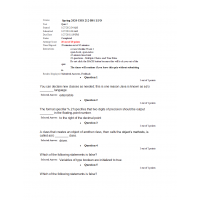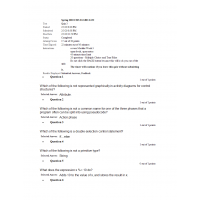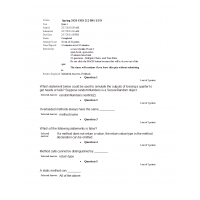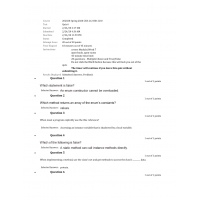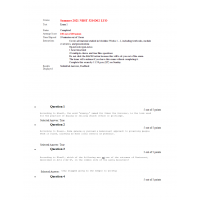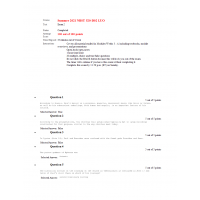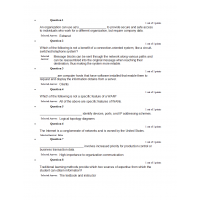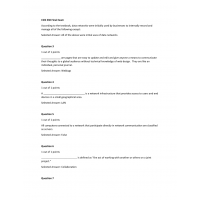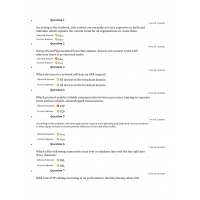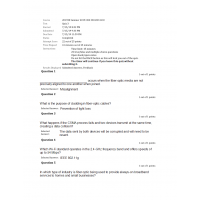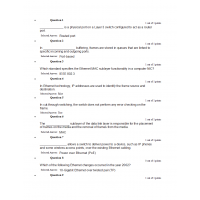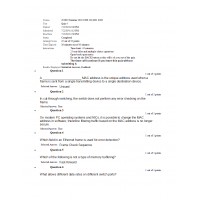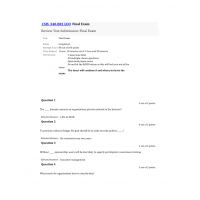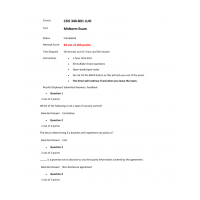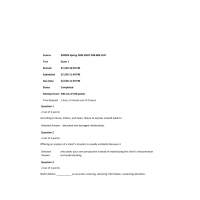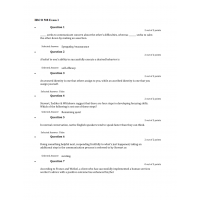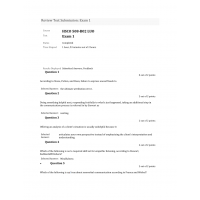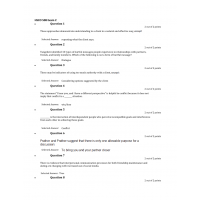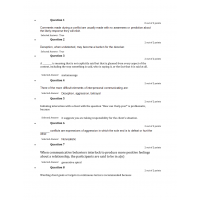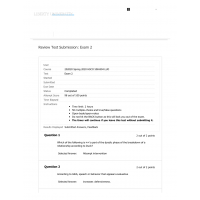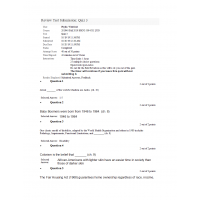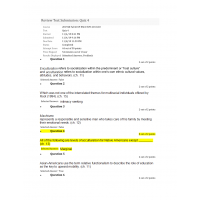HSCO 509 Quiz 1 - Question and Answers
HSCO 509 Quiz 1
1. ______ is the arbitrary, socially constructed classification of individuals often based on physical distinctions such as skin color, hair texture, face form, and eye shape. (ch. 1)
2. Who is the researcher whose model of spirituality or religion is most commonly associated with the Young Adult, the Tested Adult, and the Mature Adult?
3. _________ is the characteristics shared by a particular group such as Asian Americans, females, and those living in poverty. (ch. 1)
4. ________ is the belief that one’s culture should serve as the norm in evaluating other cultures. (ch. 1)
5. Which model of gender identity development includes Passive-Acceptance, Revelation, and Embeddedness-Emanation? (ch. 2)
6. Which of the following terms is not associated with culture? (ch. 1)
7. _______ is a related term that refers to shared characteristics of culture, religion, and language, to name a few. (ch. 1)
8. Individuals from collectivist cultures may be reluctant to seek counseling ________ (ch. 1)
9. ________ refers to a narrow and rigid view of the world and other cultural groups using one’s own cultural groups as a reference. (ch. 1)
10. Which model of racial identity development stresses the stages of Pre-encounter, Immersion- Emersion, and Internalization- Commitment? (ch. 2)
11. ______ is the blending of masculinity and femininity for both males and females. (ch. 1)
12. Which of the following traits are not associated with collectivism? (ch. 1)
13. Which of the following does not indicate socioeconomic status (SES)? (ch. 1)
14. ________ refers to the sexual or affectional attraction to the same or opposite gender, or both. (ch. 1)
15. _______ refers to commonalities shared by all cultures and humankind. (ch. 1)
16. All of these stages were part of Poston’s five stages of biracial identity development except? (ch. 2)
17. What was the percentage of U.S. families that reported incomes below the poverty level in 2013? (ch. 1)
18. _________ refers to one’s nation of origin, such as France, Kenya, China, or Native America. (ch. 1)
19. Which of the following traits are not associated with individualism?
20. Cultural identity and _________ are of great importance to counselors because these constructs provide frameworks that assist in the understanding of client identification within social and cultural contexts and the effects of values, culture, beliefs, worldviews and interactions with clients. (ch. 2)
21. Which group represents the fastest growing population in the United States and will comprise approximately 29% of the general population by 2060? (ch. 1)
22. All of the following are stages in Poll and Smith’s Model of Spiritual Identity except: ______ (ch. 2)
23. ________ refers to the degree to which individuals identify belonging to subgroups or various culture groups. (ch. 1)
24. Which sexual identity model includes Identity Confusion, Identity Assumption, and Commitment? (ch. 2)
25. _________describes the degree of identification with a particular sexual orientation. (ch. 1)
| Institution & Term/Date | |
| Term/Date | Liberty University |
-
$9.99

